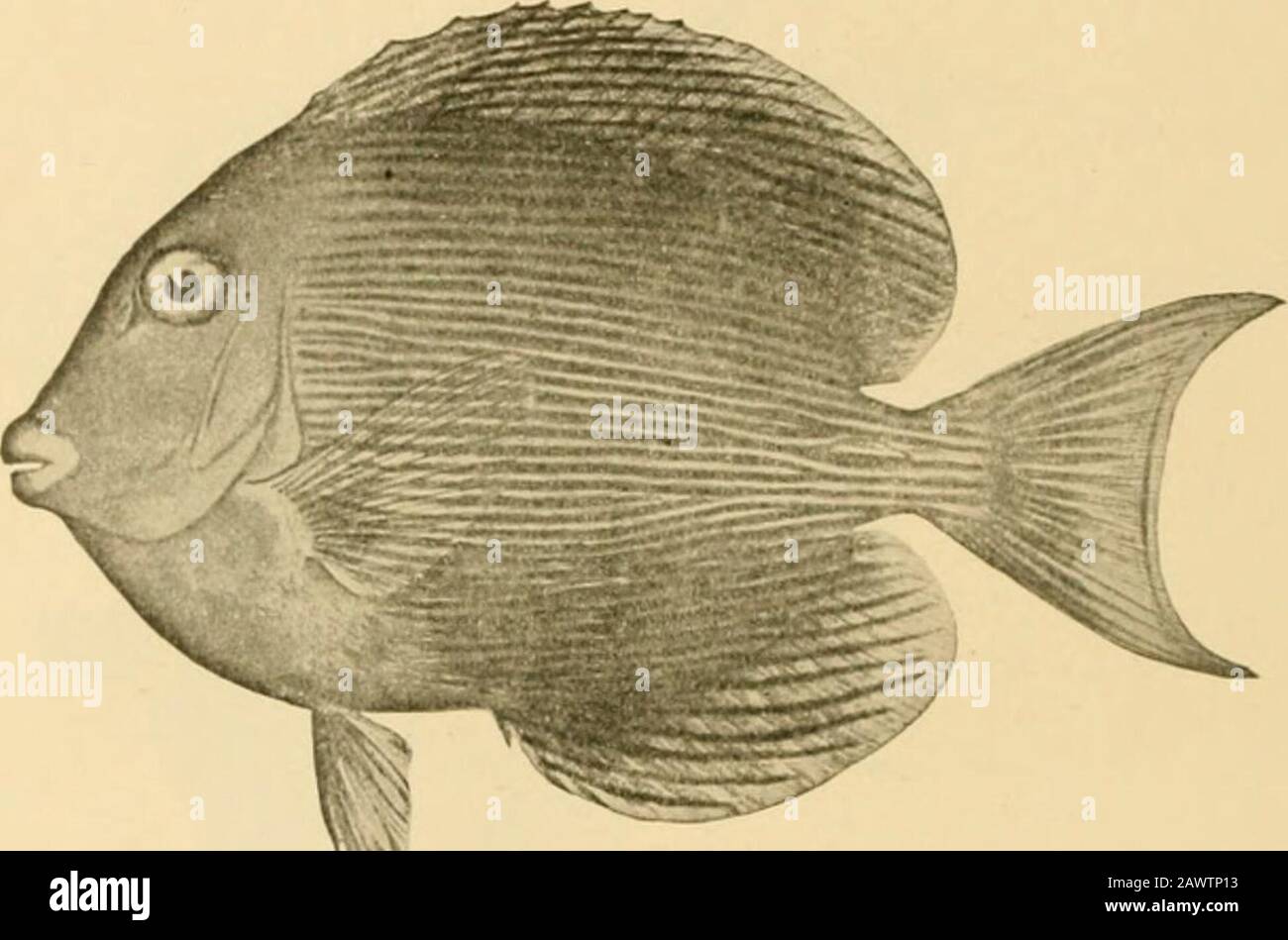Fishes . FiG. 511.—The Moorish Idol, Zanchts canescens (Linnijeus). From Hawaii.Family Zanclidit. (Painting by Mrs. E. G. Norris.) green, and in the adult two bony horns grow out over the eye.The dorsal spines are prolonged in filaments and the color isyellow crossed by bars of black. Zanclus canescens is a veryhandsome fish with the general appearance and habit of aChcEtodon, but the form is more exaggerated. It is foundthroughout Polynesia, from Japan to the oft-shore islands of 6i8 The Squamipinnes Mexico, and is generally common, though rarely entering rockpools. Zanclus eocmnus is recorde

Image details
Contributor:
The Reading Room / Alamy Stock PhotoImage ID:
2AWTP13File size:
7.1 MB (222.6 KB Compressed download)Releases:
Model - no | Property - noDo I need a release?Dimensions:
1944 x 1285 px | 32.9 x 21.8 cm | 13 x 8.6 inches | 150dpiMore information:
This image is a public domain image, which means either that copyright has expired in the image or the copyright holder has waived their copyright. Alamy charges you a fee for access to the high resolution copy of the image.
This image could have imperfections as it’s either historical or reportage.
Fishes . FiG. 511.—The Moorish Idol, Zanchts canescens (Linnijeus). From Hawaii.Family Zanclidit. (Painting by Mrs. E. G. Norris.) green, and in the adult two bony horns grow out over the eye.The dorsal spines are prolonged in filaments and the color isyellow crossed by bars of black. Zanclus canescens is a veryhandsome fish with the general appearance and habit of aChcEtodon, but the form is more exaggerated. It is foundthroughout Polynesia, from Japan to the oft-shore islands of 6i8 The Squamipinnes Mexico, and is generally common, though rarely entering rockpools. Zanclus eocmnus is recorded from the Italian Eocene. The Tangs: Acanthuridae.—In the next family, AcanthuridcB, the surgeon-fishes or tangs, the scales remain small and shagreen-like, the body is more elongate, the gill-openings still morerestricted, and the teeth are flattened and incisor-like. The pubicbone is more elongate, and in all the species some sort of arma-ture is developed on the side of the tail. The spinous dorsal. Fig. 512.—Teuthis cceruleus (Bloch & Schneider), Blue Tang; Medico.Family Teiilhididce. in all is less developed than the soft dorsal. The species aboundin the warm seas, especially about the tide pools, and are usedas food. They undergo considerable changes with age, thecaudal armature being developed by degrees. Nearly all aredull brown in color, but in some a vivid ornamentation is added.Fossil forms are found from the Eocene and later. Most ofthese are referable to Teuthis and Acantlturus. The principal genus is Teuthis, characterized by the presenceon each side of the tail of a sharp, knife-like, movable spine•with the point turned forwards and dropping into a sheath.This spine gives these fishes their name of surgeon-fish, doctor- The Squamipinnes 619 fish, lancet-fish, tang, barbero, etc., and it forms a very effectiveweapon against fish or man who would seize one of thesecreatures by the tail. The species have the center of distributionin the East Indies and have